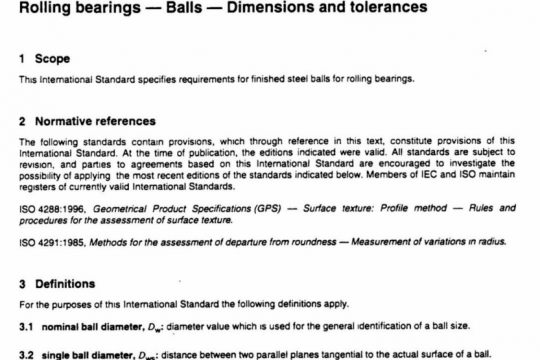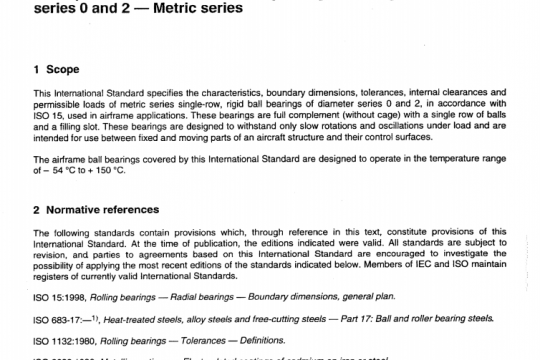ABMA 15243:2017 pdf free
ABMA 15243:2017 pdf free.Rolling bearings – Damage and failures – Terms, characteristics and causes
Adhesive wear is characterized by a transfer of material from one surface to another with frictional heat and, sometimes, tempering or rehardening of the surface. This produces localized stress concentrations with the potential for cracking or spalling of the contact areas.
Smearing (skidding, galling, scoring, frosting) occurs because of inadequate lubrication conditions when sliding occurs and localized temperature rises from friction cause adhesion of the contacting surfaces,resulting in material transfer. This typically happens between rolling elements and raceways if the rolling elements are too lightly loaded and subjected to severe acceleration on their re-entry into the load zone (see Figures 11 and 12). In severe cases of smearing, seizing may result. Smearing is usually a sudden occurrence as opposed to an accumulated wear process.
If a bearing ring moves (creeps) relative to its seat because of inadequate retention on the shaft or in the housing, then smearing (also called scuffing) can occur in the bearing bore, the outside diameter or on the shaft or in the housing seat. Because of the minute difference in the diameters of the two components, they will have a minute difference in their circumferences and, consequently, when brought into contact at successive points by the radial load rotating with respect to the ring, will rotate at minutely different speeds. This rolling motion of the ring against its seating with a minute difference in the rotational speeds is termed“creep”.
When creep occurs, the asperities in the ring/ seat contact region are over-rolled, which can cause the surface of the ring to take on a shiny appearance. The over-rolling during creeping is often, but not always, accompanied by sliding in the ring/seat contact, and then other damage will also be visible, e.g.score marks, fretting corrosion and wear. Under certain loading conditions and when the ring/ seating interference fit is insufficiently tight, fretting corrosion will predominate (see A.2.4.2.1 and A.2.4.2.2).
Furthermore, with a loose radial fit, creep can also occur between the face of a ring and its axial abutment. In severe cases, this can lead to transverse thermal cracks and finally cause cracking of the ring (see 5.6.4). ABMA 15243 pdf free download.




